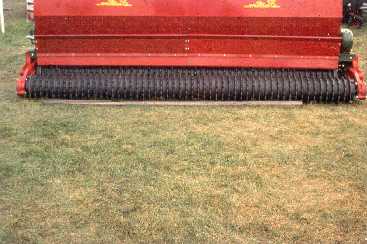Sod production
Learn the benefits of sod, type of land required for production, turfgrass species grown and agronomy practices used.
Introduction
What is Sod?
Turfgrass sod is a mature grass cover, which is produced, in an intensively managed agricultural operation. It is removed intact with a minimal amount of soil, transplanted in another area and instantly forms a grassy turf cover.
What are the Benefits of Sod?
When planting new grass, seeding is an option but there are many positive aspects of sod, which make it a better choice. Locations that are sodded with turf require irrigation for a shorter time after planting than those seeded sites. In sodded area, there should be no need to apply herbicides for weed control for up to 2-4 years. Sod protects land from wind and water damage thus making it is valuable for erosion control. There is a decreased chance of failure in sodded sites than of those seeded. Seeding is restricted to certain periods of the year whereas sodding can be done anytime in the growing season. Mowed grass discourages rodents, snakes, ticks and other pests from habituating, as they prefer longer more protective areas. Sod also serves to enrich soil as their extensive root system decays to form humus.
There are other health benefits associated with sod. Turfgrass reduce high temperatures by natural transpirational cooling. Turfgrass absorbs pollutants such as carbon dioxide from the air and traps dust and dirt with organic chemicals from the atmosphere. Photosynthesis occurring in the lawn releases a large quantity of oxygen into the atmosphere. A decrease in weeds will help to control pollen, which causes allergic reactions. Lush grass serves as a playing area for recreation. Turfgrass creates a beautiful environment that may contribute to increased real estate value.
History of Sod in Ontario
William Ruthven, a prominent and well-traveled farmer from Alliston Ontario, started the Canadian commercial turfgrass sod industry in the early 1950's. He developed a 900 acre turf farm, the first of it's kind in Canada.
There was a rapid growth of the turfgrass industry during the early stages of turfgrass sod production. The availability of Merion Kentucky bluegrass was a main factor in this rise. Merion Kentucky bluegrass was one of the first superior varieties of Kentucky bluegrass that had an extensive root system enabling rapid production of saleable turf sod. The general availability of the turfgrass sodcutter, which was developed in the late forties, helped increase sod production. With a boost in the economy and higher incomes, there was an increased demand for sod in all types of construction. Finally, there was a development of herbicides for broadleaf weed control.
Type of Land Required for Sod Production
When choosing a location for sod production, several factors should be considered. The soil type, land clearing, drainage and water control, leveling, access roads and the development of an efficient irrigation system should be taken into consideration.
When considering soil type, look at the depth of the soil and the uniformity of both the soil depth and the depth within a field. Consider the need for tile drainage and drainage ditches as well as the feasibility of lowering the entire drainage system. Sandy loam is the best soil for sod production. Although sod will grow on muck or organic soils, the yield is much lower. Harvesting is very difficult on sod that is grown on heavy ground or clay because it gets too heavy when it is wet and too hard when it is dry. Land topography should be flat to no more that gently undulating because erosion of the seeds and seedlings can occur on sloped soils. Choose an area that is well drained to prevent winterkill. Lower areas tend to dry more slowly.
Turfgrass Species Used for Sod Production
There are many species used for sod production. The selection of the turfgrass species is dependent on the particular species or variety, market demand and the adaptation to the environment where the sod will be planted.
Kentucky Bluegrass Sod is nursery sod grown from one or more Kentucky bluegrass cultivars. It is highly recommended by the Nursery Sod Growers Association. Vigorous rhizome development and its broad adaptation to cool, humid environmental conditions make it the predominant turfgrass species in Ontario. It is for use in sunny to slightly shady locations however Kentucky bluegrass is susceptible to powdery mildew causing thin patches to form in shady areas. Excellent colour and texture make it a high quality turf for residential lawns. Other uses include parks, cemeteries, institutional grounds, boulevards, golf courses, sports fields, office and commercial lawns. There are roughly 66 different cultivars of Kentucky bluegrass available for use as sod in Ontario. For the current list of cultivars available consult OMAFRA Publication 384, Turfgrass Management Recommendations. A desirable practice for commercial sod production is to blend 2-4 varieties of the Kentucky bluegrasses. Use different varieties to ensure that one is adapted to low/high maintenance, one is adapted to sandy/heavy soils and one is adapted to shade/sun. This practice ensures a higher adaptability of the sod to its environment.
Kentucky Bluegrass/Fine Fescue is nursery grown from a seed mixture containing 90-95% by weight of Kentucky bluegrass cultivars and 5-10% by weight of creeping red, chewings or hard fescue cultivars. This all purpose sod has a moderate shade adaptation and is used in parks, cemeteries, institutional grounds, boulevards, sports fields, office and commercial lawns.
Fine Fescue/Kentucky Bluegrass Sod is nursery grown from a seed mixture containing 60-70% by weight of Kentucky Bluegrass cultivars and 30-40% by weight of creeping red, chewings or hard fescue cultivars. This is a less attractive variety, which require less maintenance. It has a high tolerance to shade and drought and is therefore used in turf areas that require shade tolerance and a minimal amount of maintenance.
NSGA's Specialty Turfgrass Sod is grown from a variety of turfgrass species such as creeping bentgrass, turftype perennial ryegrass, fine leafed fescues and other species including supina bluegrass and weeping alkaligrass.
- Creeping Bentgrass is a fine textured, very dense, low growing species. There are high maintenance costs associated with mowing and disease control. It is mainly used for putting and bowling greens, fairways and tees.
- Turf-type Perennial Ryegrass is a medium textured, shiny leafed, moderately fast growing species that exhibits good wear tolerance. In many parts of Ontario, it lacks cold hardiness. This species is usually found on lawns, sport fields and fairways. It may be grown in a mixture with Kentucky bluegrass. Because it lacks rhizomes, it is not suited to be more than 25% of the mixture by weight.
- Fine-Leafed Fescues are very fine and less attractive. These include creeping red fescues, chewing fescues, hard fescues and sheep fescues. These are shade-adapted, drought tolerant and ideal for low maintenance situations. Fescues have lower nitrogen and water requirements and may be grown in a mixture with Kentucky bluegrass. Red fescue is not widely used in commercial sod production because it has weak rhizome development and is not resistant to leaf spot. It is mainly used in shady areas with droughty soils. Red fescue is not extensively grown in a mixture with Kentucky bluegrass although it is adapted for both full sunlight and shade.
- Turf Type Tall Fescue is a course textured, drought resistant and wear tolerant species. It has weak sod forming characteristics due to lack of adequate rhizome development therefore it has a longer production period and requires that a greater amount of soil be removed during harvesting to facilitate moving. When damaged, it is non-recuperative. For use in sports fields and low maintenance areas that are mowed at a higher height.
- Supina Bluegrass is a shade and wear tolerant species.
- Weeping Alkaligrass is a salt and alkaline pH tolerant species
B. Agronomy
Establishment
Prior to seeding fields must be cultivated and tilled to 20-25 cm. Remove stones at seedbed preparation to a minimum depth of 4 inches. Soil tests are conducted to determine pH (limiting or acidifying the soil) before turf establishment. Lime can be applied to the soil to increase the pH to 5.5-6.0 on organic soils and 6.0-6.5 on mineral soils. Ensure that the site is well drained, as excess water will cause problems and delays.
The field should be free from weedy perennial grasses such as quackgrass, bentgrass, reed canarygrass, johnsongrass, bermudagrass and nutsedge prior to seeding. It is harder to rid crabgrass from turf therefore spray roundup, a non-selective herbicide which has a short residual (7-10 days). Grading of the seedbed must be done to ensure the seedbed is as smooth as possible and to remove all debris and objects which interfere with seeding and harvesting. A cultipacker is used to level the soil. The preparation of a level soil immediately prior to seeding to remove microdepressions will reduce the depth that the cutter bar on the harvester must be set at to avoid scalping during harvest. Working with dry soil prevents soil clumps or crusting of the surface layer.
Late summer seedlings are the most successful, especially in the northern climates. Seeding usually occurs in late August or early September when there is the best combination of good moisture, temperature and growing conditions. Seeds are planted with a cultipacker, which places the seeds at the appropriate depth and rolls and packs soil around the seeds (Figure1). Seed germination time varies with species and conditions but ranges between 1-2 weeks. Fall planted seeds should be 2.5-10 cm high by freeze-up and the root system should have developed to be strong enough to withstand effects of winter desiccation and heaving.
Seeding can also be done in the spring, but face an increase in competition from weeds and annual grasses. There are also stresses from moisture and temperature. Uniform stands are more difficult to achieve this way.
Dormant seeding is used in regions where the temperature stays below zero for extended periods of time during the winter months. There is a decreased chance of achieving a successful strand. Seedlings germinate in spring and overcome some of the disadvantages of the spring seedlings. This method is good on land that is not subjected to flooding or wind /water erosion.
A uniform seeding is essential. Planting operations will vary with the equipment available. Cultipacker type seeders (Brillion seeders) (Figure 2) are the most widely used means of seeding since the seed is placed at a shallow depth and firmed by rolling in a single operation. Adequate contact of the seed with the soil can not be over emphasized. The seed can also be broadcast, mixed lightly into the soil and rolled. However this requires additional labour and is not practical for large acreages.
Machines with large flat tires or flotation operations are desirable because they eliminate tracks from truck tires that interfere with seeding and harvesting. Large width tires provide low ground pressure necessary to decrease compaction and rutting when working on new seedlings, netting and bentgrass.
Maintenance
When producing sod, the turf growers primary concern is to develop sod by enhancing root and rhizome development and stolon growth. The quality of the above ground portion of the sod is a concern to turf growers, but is less than that of the below ground portion. When selecting a turfgrass, choose a species that has good root development for efficient, early sod cutting.
Irrigation is very important in sod production as it supplements natural precipitation and increases sod production (Figure 3). The quantity depends on the soil texture, natural precipitation potential evapotranspiration and the rate of grass growth (up to 24 inches water per season). Excess moisture will lead to stresses such as a lack of oxygen for rooting, an increase in weeds and diseases and increased difficulties in mowing. High salts in water may inhibit plant root water uptake therefore increasing production time for a crop. The optimal water quality is generally around 700ppm. Sandy or light soils should be irrigated, especially in July and August when the conditions are drier. Frequent irrigation at low rates is common during the establishment of the sod but as it matures less frequent applications at heavier rates are preferred.
Mowing of sod starts the following spring after seeding or as soon as it can be cut. Many growers use gang mowers and some wide rotary mowers (Figure 4). Mowing the grass encourages the root system to spread through the rhizomes and eventually produces a mat of roots tough enough to harvest is formed. Turf should be mowed every 4-5 days to promote lateral growth of the shoot extensions and therefore induce root knitting. For Kentucky bluegrass mowing should be every 2-3 days. At the time of mowing, not more than one third of the plant is removed. The preferred heights for Kentucky bluegrass and Red fescues are 3-4 cm and bentgrasses are 1cm or less. If mowing is delayed due to rain or other circumstances, clippings from the grass may need to be removed. Before harvesting older sods, vertical mow the turf to remove dead plants and clippings.
Fertilization recommendations vary with different soil and sod varieties. Nitrogen is the main maintenance fertilizer applied except in areas where nutrients are found to be limiting. The application of nitrogen is important to ensure rapid growth and proper sod formation. Most nitrogen is applied in spring and fall, depending on the time of seeding. Light rates are applied throughout the summer as needed for maintenance and to enhance colour before harvest.
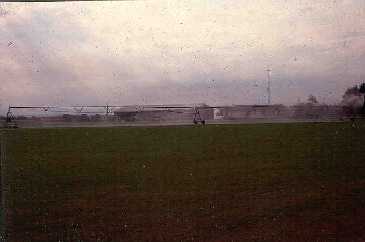
Figure 3. Typical pivot irrigation used on sod farms.
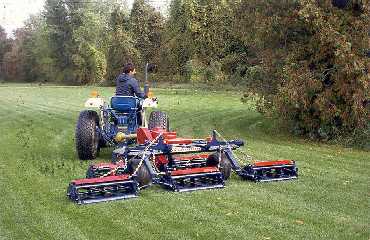
Figure 4. Gang reel mower used on a sod field.
Nitrogen Requirements for Nursery Sod
|
Time of year |
Nitrogen Amount |
|---|---|
|
Prior to Seeding |
50-90 (kg N / ha) (50 on fine textured and up to 90 on coarse textured) |
|
Spring after Seeding |
70 (kg N / ha) if <85% cover 35 (kg N / ha) if > 85% cover |
|
Mid-late June |
50 (kg N / ha) |
|
3 weeks prior to harvest |
35 (kg N / ha) |
|
If held over for 2nd year - September |
35 (kg N / ha) |
|
If held over for 2nd year - November |
35(kg N / ha) |
|
If held over for 2nd year - Late May |
35(kg N / ha) |
Phosphorus and potassium fertilizer rates should be determined by a soil test. Sod phosphorus and potassium requirements based on soil tests can be found in Publication 384, Recommendations for Turfgrass Management.
To correct the heaves and depressions from the winter, surface leveling by rolling must be done three to four times per year.
Herbicides should be applied early in the harvest cycle to control weeds. Weedy perennial grasses should be eradicated prior to seeding the crop. Quackgrass, bentgrass, nutsedge, and annual bluegrass are the most important perennial weedy grasses in cool, humid production areas. The quantity of weeds should decrease after the first few years unless there is a new source introduced. Most broadleaf control is done by 2,4-D, mecoprop or dicambia. The postemergence control of annual weedy grasses such as crabgrass and foxtail is achieved with two applications, seven to ten days apart. It is important to ensure that perennial grasses in drainage ditches do not seed.
Disease and insect damage is less common in sod production. It is important to control root and leaf feeding insects. Pay attention for chinch bugs, sod webworms and army worms. Powdery mildew, Necrotic ring spot and Helminthosporium leafspot can restrict sod formation of certain cultivars. Diseases are not much of a concern in Kentucky bluegrasses.
Cropping Cycle
The average turnover for turf is 1 ½ to 2 ½ years depending on climate and the intensity of management, however it is possible to harvest only after one year of seeding. The demand for sod supply is from late April through November. It takes between three months and two years to produce a marketable crop of Kentucky bluegrass and a substantially longer period for Red fescues. To decrease cropping time, select a quick knitting cultivar (eg. Kentucky bluegrass)
Sod Quality
High quality sod possesses the following characteristics:
- uniformity
- good density
- freedom from serious weeds, weed seeds, diseases, insects and nematodes
- acceptable colour
- adequate sod strength for handling
- sufficient maturity in terms of carbohydrate reserves
- minimal amount of thatch
- Rhizome or stolon development is the most important factor in sod strength and sod rooting capability.
Sod Harvesting and Shipping
Sod is ready to harvest as soon as the rhizomes and roots have developed and knitted enough to permit handling the sod pieces without tearing. The sod should be moist but excessive moisture should be reduced to avoid excess weight and therefore excess shipping costs. Mechanical cutters cut sod to 30, 45 or 60 cm widths (Figure 5). The thickness of the sod removed depends on the turfgrass species, the type and uniformity of the soil and the development of the rhizomes and roots of the sod. Thin cut sod is easier to handle and will root faster than thick but the thicker sod offers more resistance to drought than the thin sod. Poor sod density must be cut thicker to facilitate handling and to compensate for the lack of sufficient root development. It is better to harvest between 6 to 8am and when the soil temperature is minimal. On average, 4100 square yards of sod is harvested per acre (Figure 6).
Equipment for sod cutting comes in different widths. Each unit cuts one square yard and mechanically rolls the sod (Figure 7). Many sod producers use the Brouwer sod harvester, which was conceived, developed, and manufactured by Gerry Brouwer from Kenswick Ontario. A new innovation is the use of the Big Roll harvester or the palletless Brouwer system. The big roll allows one to harvest 60 cm wide strips, up to 1500 square yards per hour (Figure 8). Netting can be incorporated under the sod as it is being harvested to allow for the harvesting of young or weak turf. Because of decreased labour costs, big rolls can bring in a higher profit. Big roll sod is often used in sports fields and other large sodding jobs. Sod is then placed in a truck for transportation to consumers (Figure 9). It is covered with a damp canvas to reduce drying during shipment.
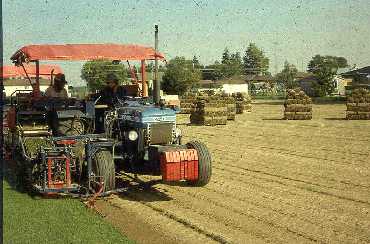
Figure 5. Conventional mechanical sod harvester.
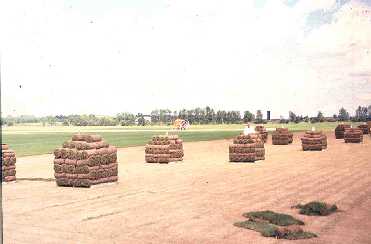
Figure 6. Pallets of sod in field.
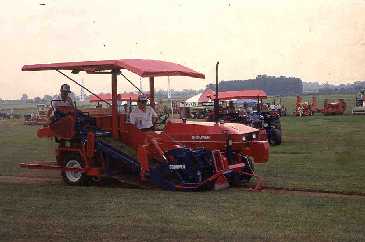
Figure 7. Mechanical rollers on sod harvester.
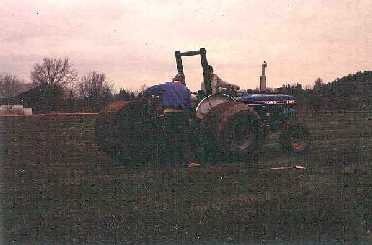
Figure 8. Big roll sod installation.
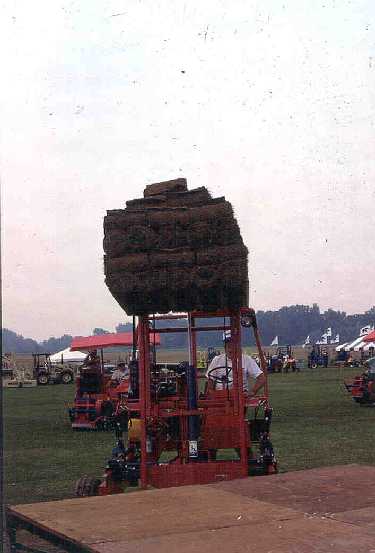
Figure 9. Pallet of sod being transported on to a transport truck.
Shelf Life
In hot weather sod must be laid within 12 hours before it is killed by the heat (Figure 10). Because of this vulnerability to heat, most sod producers are within 50 miles of their market. Transplanted sod will also die if there is an insufficient supply of water. Lethal effects from heating in Kentucky bluegrass can be observed in 12 to 60 hours when the temperature is at 105° F. Several factors can increase sod heating such as a high soil temperature at harvest time, a high nitrogen fertility level, excessive irrigation and the presence of clippings. Helminthosporium leafspot increases sod heating and therefore diseases. Sod is most prone to heating during the period when it is initiating seed heads. A ventilation system or artificial cooling can be used to keep sod cool but is costly.
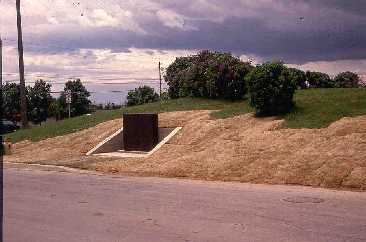
Figure 10. Unsuccessful sodding job.
C. Marketing
Marketing
Growers are generally within 50 miles of their consumers to avoid higher freight costs and sod heating during shipment. Sod grown in Ontario is sold within the province. Exported sod must pass inspection by Agriculture Canada. Recently, the sod industry was the largest in Western Canada, particularly in Ontario and Quebec.
Of the total sales, approximately 60% are for residential construction and 40% for various commercial products such as schools, factories, sport fields and highways. Over the past years, the use of sod on sports fields and golf courses has increased but has decreased on highways.
The demand for sod is largely dependent on the housing market (Figure 11). After 1991, the sod sales in Ontario dropped 41% because there was little new housing. With an increase in populations and housing comes an increase in the demand for sod.
The grower's target yield is approximately 5,500 yards square / acre / year. Their price is between $1.00- $1.50 per yard square. The following are some general rules of thumb for growers to follow. The amount of money invested is approximately $5,000 per acre. 50-60% of income is direct expense. Between 75-85 hours of labour per acre is required.
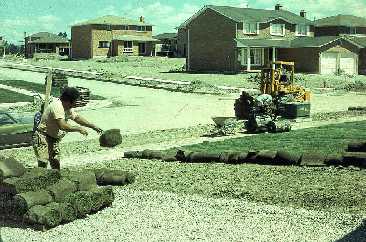
Figure 11. Typical sod installation in new home development.
Soil Loss During Sod Production
The amount of soil lost at harvest varies depending on the time of harvest, soil type and moisture content. According to research done at the University of Guelph (TPIC), 1cm of soil is removed at harvest. 9.4mm of soil and 8.5mm of thatch was associated with the soil removed in the sod roll. Many sod growers grow carrots and potatoes in rotation with sod to manufacture soil. After harvesting, many roots remain in the soil and are tilled under.
Soil scientists and the United States, Internal Revenue Service have studied soil loss during sod production and concluded that commercial turfgrass production will not deplete topsoil. Their findings showed that turfgrass actually improves farmland by adding organic materials and nutrients to the soil. They also stated that the turfgrass opens up the soil to accept greater amounts of moisture and reduces water and wind erosion of the soils.
Open row crops such as corn and cotton, even using the best conservation techniques, have been shown to lose greater amounts of topsoil through erosion than sod production.
Where is Sod Produced in Ontario? # acres?
Sod is grown throughout Canada except in the more Northern regions where cold temperatures, long winters and late ground freeze delay or inhibit the growth of sod. Ontario grows about 4,411 hectares of sod per year.
NSGA and Sod Specifications
The Nursery Sod Growers Association of Ontario was formed in 1960. It is a self-supporting organization through membership dues. Presently, there are 36 active members who represent approximately 70% of Ontario sod sales. The NSGA funds research at the University of Guelph to determine which species, cultivars and techniques will produce a superior turfgrass sod for the consumer. NSGA has raised $150,000 toward the construction of the $1.5 million Guelph Turfgrass Institution.
Turfgrass nursery sod is grass that has been seeded and cultivated in nursery sod fields as a turfgrass sod.
Quality Standard
- Number One Grade Turfgrass Nursery Sod
At the time of sale, number one grade turfgrass nursery sod should be healthy. It may contain 1 broadleaf weed per 40 square meters and up to 1% native grasses. Native grasses are any other species then what was planted. There must be sufficient shoot density so that no soil is visible from a standing position when mowed to a height to 4cm. The mowing height should be between 3-7cm except for creeping bentgrass sod where the height is determined by the end use. The thickness of the soil portion of the sod is not to exceed 1.5cm, but this can vary with field and environmental conditions. The soil portion is generally composed of 50% volume of grass roots. Number one grade turfgrass nursery sod is suggested for areas where a high quality, attractive turf is required such as residential and commercial lawns, golf courses and sports fields.
At the time of sale, commercial grade turfgrass nursery sod should be healthy. It may contain up to 5 broadleaf weeds per 40 square meters and up to 20% native grasses. There must be sufficient shoot density so that no surface soil will be visible from a standing position when mowed to a height of 4cm. The mowing height should be between 3-7cm except for creeping bentgrass sod where the height is determined by the end use. The thickness of the soil portion of the sod is not to exceed 1.5cm, but this can vary with field and environmental conditions.
Commercial grade turfgrass nursery sod is suggested for use for erosion control, roadsides and other minimal maintenance areas.
Classification, Description and Use of Turfgrass Nursery Sod
Kentucky Bluegrass Sod
Nursery sod grown from one or more Kentucky bluegrass cultivars. Highly recommended by N.S.G.A., this all-purpose sod is a first choice for Ontario climates for use in sunny to slightly shady locations. Its excellent colour and texture make it an attractive, high quality turf especially for residential lawns. Also used for parks, cemeteries, institutional grounds, boulevards, golf courses, sports fields, office and commercial lawns.
Kentucky Bluegrass/Fine Fescue Sod
Nursery sod grown from a seed mixture containing 90 - 95% by weight of Kentucky bluegrass cultivars and 5 - 10% by weight of creeping red, chewings or hard fescue cultivars. An all purpose sod with moderate shade adaptation. Suitable for residential lawns, parks, cemeteries, institutional grounds, boulevards, golf courses, sports fields, office and commercial lawns.
Fine Fescue/Kentucky Bluegrass Sod
Nursery sod grown from a seed mixture containing 60% - 70% by weight of Kentucky bluegrass cultivars and 30% - 40% by weight of creeping red, chewings or hard fescue cultivars. A less attractive lower maintenance sod having higher tolerance to shade and drought stresses. Suitable for any turf area requiring shade tolerance and/or minimal maintenance.
Specialty Turfgrass Sod
Nursery sod grown from seed of various species of turfgrass such as:
A. Creeping Bentgrass
A fine-textured, very dense, low growing species recommended for use on putting greens, bowling greens, fairways and tees. Usually grown as a mono-stand of a single cultivar.
B. Turf-Type Perennial Ryegrass
A medium-textured, shiny-leafed, moderately fast growing species exhibiting good wear tolerance. Lacks cold hardiness in many parts of Ontario. Can be used for lawns, sports fields and fairways. May be grown in a mixture with Kentucky bluegrass.
C. Fine-Leafed Fescues*
A less attractive, very fine-textured, shade adapted and drought tolerant species suitable for low maintenance situations. May be grown in a mixture with Kentucky bluegrass. Has lower nitrogen and water requirements.
D. Turf-Type Tall Fescue
A coarse-textured, drought resistant and wear tolerant species. Non-recuperative when damaged. Lacks cold hardiness in many parts of Ontario. Suitable for sports fields and low maintenance areas mowed at higher heights.
E. Other Species
Include supina bluegrass (a shade and wear tolerant species), weeping alkaligrass (a salt and alkaline pH tolerant species), and other specialized turfgrasses as they may be identified.
Related Links
- Commercial Grade Turfgrass Nursery Sod
- Publication 384, Turfgrass Management Recommendations
*Includes creeping red fescue, chewings fescue, hard fescue, and sheep fescue.

